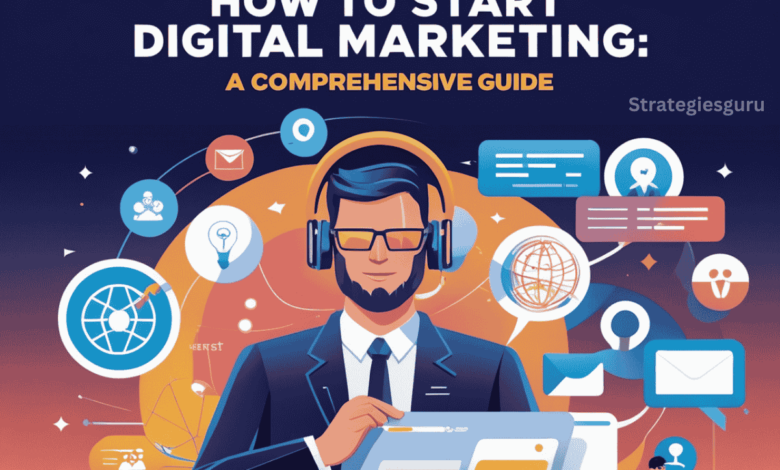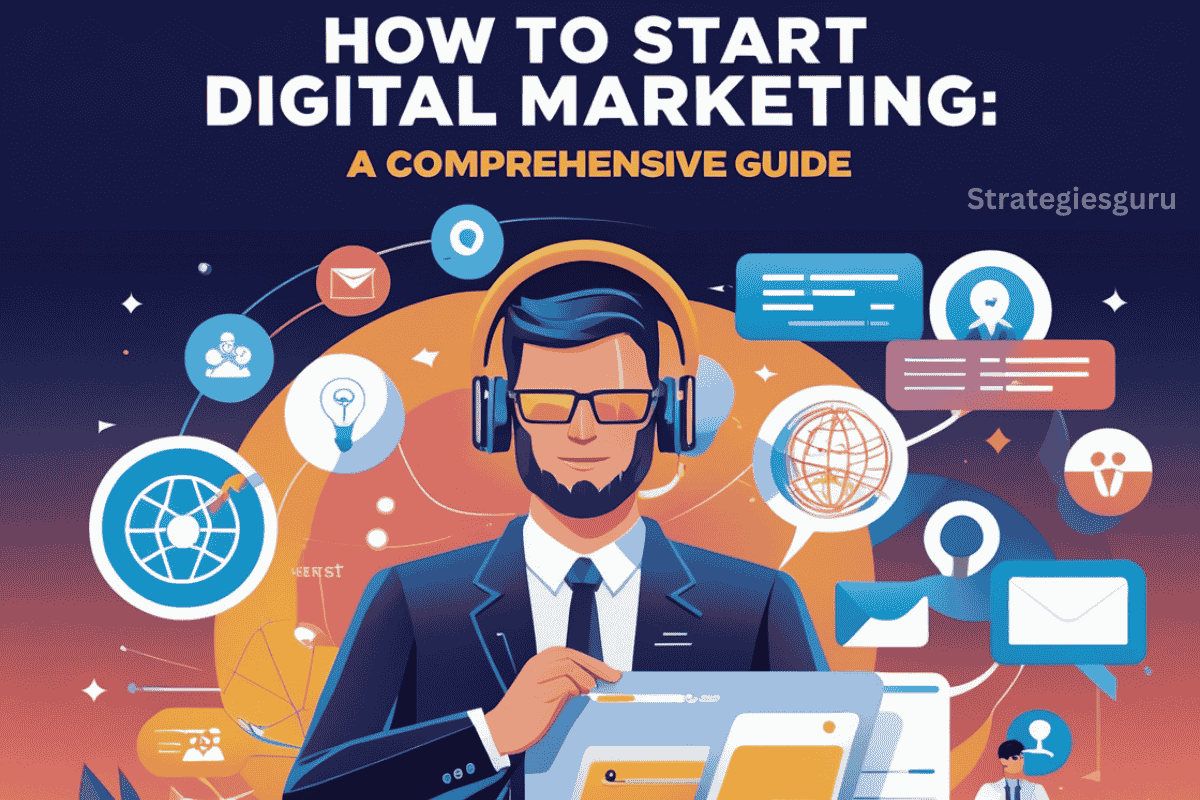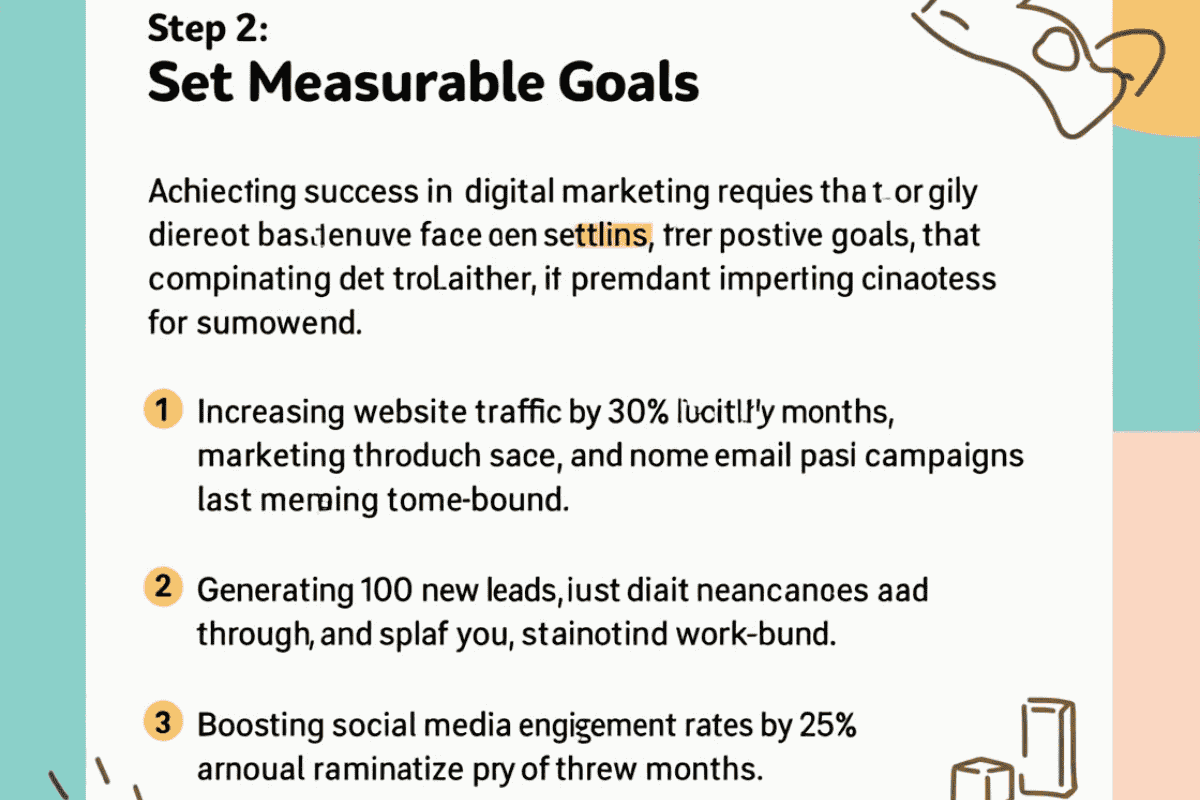How to Start Digital Marketing: A Comprehensive Guide

 Digital Marketing is now a vital component of contemporary corporate strategy. It focuses on efficiently promoting good, services, and concepts through internet platform. Business may answer customer requirements foster interaction and establish trust globally by utilizing platform like social media. Email, and search engines with practical advice for ambitious professionals this guide provides the essential stage to launch your digital marketing career.
Digital Marketing is now a vital component of contemporary corporate strategy. It focuses on efficiently promoting good, services, and concepts through internet platform. Business may answer customer requirements foster interaction and establish trust globally by utilizing platform like social media. Email, and search engines with practical advice for ambitious professionals this guide provides the essential stage to launch your digital marketing career.
Contents
- 1 What is Digital Marketing?
- 2 Why Choose Digital Marketing?
- 3 Step 1: Master the Fundamentals
- 4 Step 2: Set Measurable Goals
- 5 Step 3: Know Your Audience
- 6 Step 4: Build a Strong Online Presence
- 7 Step 5: Learn Technical Tools and Skills
- 8 Step 6: Choose the Right Platforms
- 9 Step 7: Craft a Detailed Strategy
- 10 Step 8: Start Small and Scale
- 11 Step 9: Stay Updated with Trends
- 12 Step 10: Commit to Consistency
- 13 Conclusion
What is Digital Marketing?
Digital marketing refers to marketing efforts conducted through digital platforms to connect with potential customers. It encompasses a variety of strategies and tools designed to meet audiences online. Some key components include:
- Search Engine Optimization (SEO): Boosting website visibility on search engines by optimizing content, keywords, and technical elements.
- Social Media Marketing: Building communities and promoting products on platforms like Instagram, LinkedIn, Facebook, and TikTok.
- Content Marketing: Crafting valuable content—blogs, videos, infographics—to attract and engage audiences.
- Email Marketing: Using personalized campaigns to communicate directly with prospects and clients.
- Pay-Per-Click Advertising (PPC): Running paid ads that charge only when users click on them, displayed on search engines or social platforms.
By integrating these strategies, businesses can tailor their efforts to align with audience behaviors and preferences.
Why Choose Digital Marketing?
 Investing in digital marketing offers unique advantages for businesses and individuals alike. Here are some reasons to dive into this field:
Investing in digital marketing offers unique advantages for businesses and individuals alike. Here are some reasons to dive into this field:
- High Demand for Skills: With businesses shifting online, there’s an increasing need for digital marketing professionals.
- Cost-Effective Strategies: Unlike traditional advertising, digital marketing offers measurable results for a lower investment.
- Global Reach: Even small businesses can attract audiences worldwide using the right strategies.
- Variety of Career Opportunities: Roles range from creative positions, like content creation, to analytical fields, like data-driven marketing.
- Constant Innovation: The dynamic nature of digital marketing ensures continuous learning and growth.
Step 1: Master the Fundamentals
 Start by understanding the core principles of digital marketing. Focus on these areas:
Start by understanding the core principles of digital marketing. Focus on these areas:
- Search Engine Optimization (SEO): Learn about keyword research, on-page and off-page optimization, and technical improvements to increase visibility.
- Content Marketing: Develop skills to create engaging and informative content tailored to audience needs.
- Social Media Marketing: Understand how to manage campaigns, grow followers, and analyze engagement metrics.
- Email Marketing: Study effective email strategies, such as segmentation and personalized messaging.
- Analytics: Gain proficiency with tools like Google Analytics to track and evaluate performance.
Step 2: Set Measurable Goals
Achieving success in digital marketing requires setting goals that are precise, doable, and quantifiable. Without clear goals, it’s simple to lose sight of development and pass up important chances for advancement. Your objectives ought to serve as a road map, directing your tactics and giving you direction.
Make sure your goals follow the SMART framework, which stands for Specific, Measurable, Achievable, Relevant, and Time-bound. This strategy guarantees that your goals are not only specific but also achievable and practical within the allotted period.
Examples of quantifiable objectives in digital marketing include the following:
- Increasing website traffic by 30% in six months: This objective is time-bound (within six months), relevant (traffic growth is a major measure of website performance), measurable (30% increase), achievable (given available resources), and precise (traffic increase).
- Generating 100 new leads through email campaigns in a quarter: It is time-bound (within a quarter), relevant (email marketing is essential to lead creation), quantifiable (number of leads), feasible (based on prior performance and list size), and precise (100 new leads).
- Boosting social media engagement rates by 25% within three months: This objective focuses on engagement, a crucial indicator of social media success. It is time-bound (to be accomplished within three months), relevant (engagement shows audience connection), quantifiable (a 25% increase), and realistic (based on current engagement measures).
- Enhancing e-commerce conversion rates by 10% over the next year:
Step 3: Know Your Audience
Understanding your audience is key to crafting effective campaigns. Focus on these elements:
- Demographics: Age, gender, location, and income level.
- Psychographics: Interests, values, and purchasing behavior.
- Digital Preferences: Preferred platforms and online habits.
- Challenges: Identify their problems and position your offering as the solution.
Create detailed customer personas to personalize your strategies and maximize relevance.
Step 4: Build a Strong Online Presence
Your digital footprint is crucial for visibility and credibility. Steps include:
- Developing a Website: Create a mobile-friendly, user-focused website optimized for SEO.
- Utilizing Social Media: Choose platforms that resonate with your audience and post consistent, engaging content.
- Claiming Local Listings: Use tools like Google My Business to enhance local search visibility.
- Producing Valuable Content: Publish blogs, videos, or podcasts that inform or entertain your audience.
Step 5: Learn Technical Tools and Skills
Modern digital marketing relies heavily on tools to streamline and measure success. Key platforms to master include:
- Google Ads and Facebook Ads Manager: For paid campaign management.
- SEO Tools: Platforms like SEMrush, Ahrefs, or Moz for optimization insights.
- Email Marketing Tools: Solutions like Mailchimp or Constant Contact to automate outreach.
- Analytics Software: Google Analytics, HubSpot, or similar tools to monitor performance.
Step 6: Choose the Right Platforms
Not all platforms are equally effective for every strategy. Choose those that align with your target audience:
- Instagram and TikTok: Ideal for engaging younger, visually-driven audiences.
- LinkedIn: Best for professional and B2B marketing efforts.
- YouTube: Effective for in-depth tutorials and thought leadership.
- Facebook: Versatile for community-building and targeted advertising.
Step 7: Craft a Detailed Strategy
An actionable plan is essential for long-term success. Include these components:
- Content Calendar: Schedule campaigns, blog posts, and updates to maintain consistency.
- Budget Planning: Allocate resources to tools, paid ads, and outsourcing as needed.
- Performance Metrics: Track KPIs like conversions, click-through rates, and ROI.
Step 8: Start Small and Scale
Experiment with a limited number of platforms or strategies to ensure quality over quantity. Monitor outcomes, gather feedback, and refine your approach based on data. Scaling up becomes more effective once you identify what works.
Step 9: Stay Updated with Trends
Digital marketing is ever-changing. Keep your skills sharp by:
- Following industry leaders like Neil Patel or HubSpot.
- Attending webinars, workshops, and conferences.
- Enrolling in advanced courses for continued education.
Step 10: Commit to Consistency
Consistency is key to building trust and driving long-term results. Regularly post content, interact with your audience, and refine your campaigns. Track your progress, adjust strategies based on data, and remain persistent.
Conclusion
Digital Marketing offers countless opportunities for development and success by fusing creativity an analytical thinking. You may create effective campaigns that provide significant result by understanding its foundation establishing specific goals. and keeping up with emerging trends. Start your journey with assurance and welcome the ongoing changes in this ever evolving sector.

